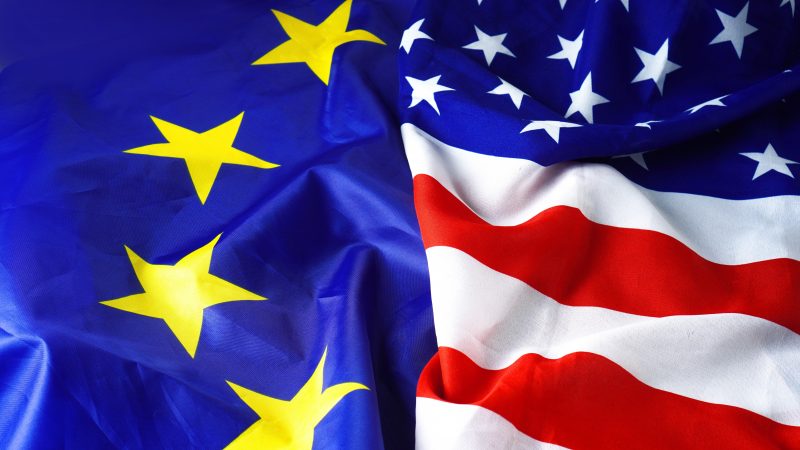Germany and the Netherlands have gained rights to substantial steel export quotas to the US from Jan. 1, 2022, after the US ends its current regime of Section 232 import tariffs on steel from the EU under a bilateral deal, according to documents posted on the US Department of Commerce website. Sweden and Austria’s quotas are also viewed as apparently favorable in some products.
The EU’s largest steel producer Germany gained a lion’s share of the region’s total annual tariff-rate quotas, or TRQs, for export to the US, at 3.33 million mt. Germany will have the right to export a total 907,893 mt of a wide variety of products, a listing showed. Its quotas include 121,185 mt annually of tinplate, 86,221 mt of plate in cut lengths and 85,676 mt of line pipe exceeding 406.4 mm in outside diameter.
Italy, the EU’s second biggest steel producer, with total quotas of 360,477 mt was left substantially behind Germany, and overtaken by the Netherlands’ total quotas of 507,598 mt. The Netherlands is home to Tata Steel’s major IJmuiden steel mill — a traditional exporter of hot rolled coil to the US.
The Netherlands’ annual quota for sales of hot rolled sheet to the US has been set at 122,529 mt, with hot rolled plate in coils at 72,575 mt, and tinplate at 195,794 mt.
The TRQ system will replace the existing 25% tariff that former US president Donald Trump imposed on EU steel imports under Section 232 legislation in March 2018. The aggregate annual import volume under the TRQ is set at 3.3 million mt under 54 product categories and allocated on an EU member state basis, in line with the 2015-2017 historical period, the US Department of Commerce said.
“The split up is a simple calculation which brings the TRQ closer to the traditional EU export flows to the US (per Member State),” said a spokeswoman for European Steel Association Eurofer.
Section 232 tariffs, however, continue to be imposed by the US on steel imports from other countries and regions, although bilateral talks on an alternative trading arrangement are currently underway between the US and Japan.
AD duties continue
According to one German plate market source however: “The tonnages are not a lot for Germany. Salzgitter still has a hefty antidumping duty, Dillinger might benefit from that. Industeel as well though the quota for Belgium is not a lot. Same for NLMK in Denmark.”
The plate source was referring to the cut to length or processed plate duties on some European platemakers: the US slapped AD duties on various producers in 2017.
Austria’s annual TRQ for hot-dipped flat rolled products is of 22,903 mt and for oil country pipe and tube goods 85,114 mt. Earlier this month, the country’s US quota levels were described by Herbert Eibensteiner, CEO of steelmaker Voestalpine, as “a good fit for Austria”. Eibensteiner said Voestalpine had continued exports to the US despite a “high administrative burden” to get exemptions for its shipments and an annual duty bill on pipe exports to the US oil and gas sector of Eur40 million ($45.23 million).
Among some of the larger country quotas are: Sweden’s quotas of 76,750 mt for cold rolled sheet and other products, of 32,320 mt of hot rolled plate in coils and 20,293 mt for hot rolled sheet. Belgium’s quotas include 24,463 mt for cold rolled sheet and other products, 26,610 mt hot rolled sheet, 13,108 mt for plate in cut lengths and 11,680 mt flat rolled stainless steel products.
The Czech Republic’s TRQ will allow annual exports of 28,741 mt of standard rails, 16,043 mt hot rolled bars, 14,317 mt of line pipe not exceeding 406.4 mm in outside diameter. For plate in cut lengths, France gains a TRQ of 73,869 mt, Denmark gains a TRQ of 11,024 mt and Finland of 18,220 mt. France also gains a 50,278 mt of hot-rolled bars.
Greece gains a 68,531 mt TRQ for line pipe exceeding 406.4 mm in outside diameter. Luxembourg gains an 86,395 mt quota to send angles, shapes and sections to the US, as well as a 38,016 mt quota for sheet piling.
Turkey rebar trade
One trading source did not expect the total annual quota of 67,248 mt for EU-origin rebar imports into US to have a significant effect on the Turkish rebar exports market.
“One of the players undercutting Turkish rebars to USA is Tosyali Algeria,” he said, adding that while Tosyali rebars do bear a 25% tariff on exports to the US, they don’t also have anti-dumping and countervailing duties, so buyers in the US are already booking rebars ex-Algeria.
“It was long known that the quota for Europe in US will be around 90,000 mt so no impact,” he added.
Quarterly administration
Commerce clarified on its website that the TRQ will be calculated for each year of the measure and administered on a quarterly basis. Any unused TRQ volume from the first quarter of the year, up to 4% of the allocated quota for that quarter, will roll over to the third quarter. Any unused TRQ volume from the second quarter of the year, subject to the same limit, will roll over into the fourth quarter, and any unused TRQ volume from Q3, subject to the same limit, will roll over into Q1 of the following year.
“The TRQ will be allocated on a first-come, first-served basis for each product category from each EU member state. The US will provide on a public website updated information on the utilization of the quarterly quota for each product category, including information on the transferred unused TRQ volumes from one quarter to another,” it said.
— Diana Kinch, Laura Varriale and Rabia Arif






